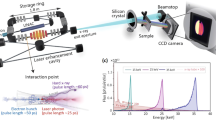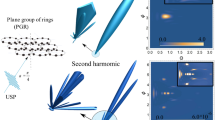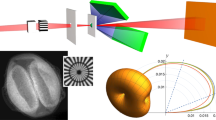Abstract
WHEN a beam of monochromatic X-rays is passed through a liquid, the intensity of scattered radiation does not, in general, fall off uniformly with scattering angle. One or more regions of maximum intensity are usually observed, and these may appear as bands or diffuse rings on a photographic plate placed to receive the rays. These facts are well known. Nevertheless, it is probably true to say that no completely satisfying explanation of such effects has yet been produced. One of the most attractive proposals has been put forward by G. W. Stewart in a series of recent papers.1 Stewart suggests that temporary groupings of considerable numbers of atoms or molecules in the liquid would account for the observed diffraction effects. This view is somewhat strengthened by the observation that the maxima for the liquid state are frequently in positions very similar to those of the strongest maxima for the solid material. It therefore appears that the units in the liquid are probably trying to group themselves according to their customary positions below the melting point.
This is a preview of subscription content, access via your institution
Access options
Subscribe to this journal
Receive 51 print issues and online access
$199.00 per year
only $3.90 per issue
Buy this article
- Purchase on Springer Link
- Instant access to full article PDF
Prices may be subject to local taxes which are calculated during checkout
Similar content being viewed by others
References
See for example Phys. Rev., 37, 9; 1931.
Author information
Authors and Affiliations
Rights and permissions
About this article
Cite this article
RANDALL, J., ROOKSBY, H. Diffraction of X-Rays by Liquid Metals. Nature 130, 473–474 (1932). https://doi.org/10.1038/130473b0
Issue Date:
DOI: https://doi.org/10.1038/130473b0
Comments
By submitting a comment you agree to abide by our Terms and Community Guidelines. If you find something abusive or that does not comply with our terms or guidelines please flag it as inappropriate.



